In 1919 an embittered Admiral Sir John Fisher published a trenchant criticism of the British Admiralty’s latest heavy warship. He did not name her, but he didn’t have to: there was only one. To Fisher, HMS Hood had too much weight devoted to armour. ‘And so bang went the speed,’ he declared. ‘They couldn’t understand speed being armour.’[1]
By any measure his words were absurd. Hood on paper lost just 1 knot during re-design in 1916-17.[2] This still made her one of the fastest heavy warships in the world at the time.[3] What made his remark doubly ironic was the fact that Hood as redesigned brought to reality the concept of the fast battleship, the idea Fisher had first tried to have built in 1906.[4]
Fisher’s critique underscores just how far his thinking had drifted from Admiralty doctrine by the end of his career. He made the comment in the first of his two memoirs – Memories – which he dictated soon after the end of the First World War. This volume and its companion Records were a salute to his lifetime of spin, putting himself at the centre of developments that – in reality – he influenced but could not wholly control. Much of Fisher’s self-promotion is repeated as if true today, including the idea that he invented battlecruisers, and the idea that this type – deployed primarily by Britain, Germany and Japan – intentionally sacrificed armour for speed. This notion has framed relentless arguments at enthusiast level over the performance of these ships.
The historical reality is more nuanced. As we explored in previous articles, Fisher was not the ‘inventor’ of the battlecruiser. His ideas about fast warships evolved in stages from the 1890s, primarily driven by technical churn and political pressure to keep costs down. We saw that as First Sea Lord he became champion of the battlecruiser largely because this was the best compromise he could get.
By the time Fisher retired from the position of First Sea Lord in 1910 he was deeply frustrated. He retired to Naples and continued to peddle his ideas. Then he was shoulder-tapped by the navy’s new political head, Winston Churchill. This drew him back into Admiralty circles, initially as a confidante and advisor, then more directly when Churchill persuaded Fisher to chair a committee on oil fuel in late 1912. This gave Fisher renewed access to the higher echelons of British policy-making, including the CID (Committee of Imperial Defence).[5] He continued to spray ideas in all directions, variously advocating submarines as the way of the future,[6] then pressing Churchill to run an all-battlecruiser construction programme for 1912-13. This failed, although there was an extended debate within the Admiralty over what to build. Four heavy ships were authorized and a variety of designs considered. One key feature of all, including a proposed ‘super-Tiger’ battlecruiser, was their protection.[7] In the end the decision was taken to run with four fast battleships, initially conceived for 26 knots but with final designs providing 24-25.[8] This diverged from the ideals Fisher now had in mind, though he had been advocating just such a ship in 1906.
By this time Fisher was enthusiastic about the potential of internal combustion engines. He was ranting to correspondents about ‘oil engines and internal combustion’ as early as 1910.[9] In 1912 he came up with a series of sketch designs for diesel-engined battleships that he called ‘HMS Incomparable’, though he also referred to them as ‘Non Pariel’ in correspondence.[10] They were relatively fast, armed with non-existent 16-inch guns, and he imagined an ‘armoured pit’ amidships to house ten 60-foot ‘motor boats’, capable of 45 knots and able to be hoisted out for battle.[11] The designs were never detailed, nor did they address the usual Admiralty requirements, and he likely proposed them as ‘think pieces’. The relatively loose way he referred to them in correspondence underscores the point. The common feature of all was heavy armour protection. But these were among the last of Fisher’s well-protected proposals, and he now began toying with a very different concept: abandoning all but the lightest armour in favour of speed and fire-power.
Fisher’s shift of thinking was likely driven by the climb in scale of heavy guns, fuelling a belief that guns had won the gun-vs-armour battle, rendering protection a waste of displacement. This idea had been explored a few decades earlier by the Italian designer Bendetto Brin. A ship with exceptional speed and the heaviest possible guns could dictate the range, pounding an enemy vessel while remaining safely outside the range of enemy fire. This idea was the opposite of Fisher’s 1904 vision of a ‘dreadnought armoured cruiser’ that carried many medium-calibre guns and appropriate armour. Fisher’s thinking, in short, had evolved.
The logic was also flawed. On paper, an ultra-fast ship with guns that outranged the enemy could control the range and remain safe. Practical reality was different, particularly in these pre-radar days. Sea conditions and visibility were a problem, especially in the North Sea where fogs and mist were part of the calculation. Fire control was far from perfect: very long range hits were challenging to obtain. The logic also worked only if the ship retained its speed advantage. This could be lost due to a multitude of causes ranging from battle damage to breakdown, boiler condition and hull condition. And that was without considering the obvious point that a likely enemy would immediately counter such a vessel by building even faster ships.
The Admiralty knew this, and the answer was obvious: armour could not be sacrificed, and the main arguments within Admiralty circles of the day were over scale and distribution. Deck protection was becoming increasingly important as ranges increased, though it took time for thinking within the Admiralty to evolve. In 1912-13, Fisher had Churchill’s ear, but there was no real chance of his concepts being adopted by the Board. However, he returned to the Admiralty as First Sea Lord soon after the First World War broke out.[12]
Fisher’s return as First Sea Lord did not give him particular leverage. In late 1914 nobody expected the war to last long, and Cabinet ordered that no further capital ships should be laid down, as none could be completed before war’s expected end. Mythology emerged afterwards that Fisher had an invasion of Germany via the Baltic in mind and ordered 600-plus ships for the purpose, including new battlecruisers: but his biographer Ruddock Mackay has shown that early discussions from 31 October into late November focused on submarine construction, and Fisher’s later claims about his ‘Baltic’ scheme with its 612-ship tally was constructed post-fact by deliberately doctoring the relevant minutes.[13]
What actually happened was that Fisher – as Churchill eventually revealed – had no serious intentions of invading Germany via the Baltic.[14] He took no risks at sea, and his early wartime building programme was issued piecemeal, focusing on the ships immediately required for North Sea work: submarines, destroyers and shore-bombardment monitors. However, the German bombardment of Yarmouth in December 1914 and subsequent alarms, coupled with the triumph of his battlecruisers at the Falklands, then gave Fisher opportunity to push for new battlecruisers. He had a lever in the form of the suspended contracts for three slightly improved Revenge-class battleships – Resistance, Renown and Repulse – and their armament, which had been intended for the 1914-15 programme.[15]
No work had been done on the battleships, and Fisher now wanted them re-cast as fast battlecruisers of a new type that he dubbed ‘Rhadamanthus’. He initially hoped to get all the contracts converted, telling Churchill on 21 December that ‘we have got to have 3 Rhadamanthi!’.[16] In the end he got two, retaining the names of the cancelled battleships Repulse and Renown, using guns already on order.[17] The pair were extremely fast, but protection was reduced to the scale of the older armoured cruisers, which was clearly inadequate against 15-inch fire. Perhaps the outstanding aspect was the rate with which the pair were built. Fisher demanded 14-month construction times,[18] which was almost achieved. Repulse, for instance, was laid down on 25 January 1915 and began builders trials on 18 July 1916, joining the fleet on 21 September.[19] The remarkable efficiency of Britain’s ship-building industry of the day was clear.
The other way Fisher got around the ban on capital ships was by creating a new classification, the ‘large light cruiser’. He then ordered two with four 15-inch guns apiece and a third with two 18-inch weapons, which were under development. These really were light cruisers, albeit on large scale, because both the scantling and scale of protection were similar to the existing C-class. The propulsion plant was also C-class machinery, doubled to produce enough horsepower.
As usual Fisher rationalised himself post-fact: a memo of 23 April 1915, for instance, annotated in his own handwriting, described ‘5 light battlecruisers’ – Renown, Repulse, Courageous, Glorious and Furious – which he described as ’33 knots speed and only 21 feet draught’.[20] In fact they comprised two separate classes, and while the shallow draught has been cited as due to Fisher’s ‘Baltic’ scheme, the reality was that the Admiralty had been eager for shallower-draught ships for some time, primarily to reduce vulnerability to torpedo damage.
Repulse and Renown reached the fleet soon after Jutland and well before the arguments over battlecruiser losses played out, casting further shade over their armour. The three ‘large light cruisers’ that followed them into service had no obvious role in the fleet. They couldn’t stand in the battle line and with just four heavy guns couldn’t fully utilise the fire-control methods devised after Jutland. All they could be used for was to support light cruiser squadrons during forays into German waters. Curiously, their designs were parallelled by the ‘battle scouts’ being considered by the US Navy in 1915, specifically as ships able to punch back while scouting for the battle fleet.[21] Unlike the British, however, the Bureau of Construction and Repair never went beyond paper designs: to the US Navy such thinking was simply a way-point in the evolution of US battlecruisers.
For Fisher, by contrast, both the Renown and Courageous classes were expressions of his new thinking. He pursued this direction into early 1915 with a series he called ‘Citadel’, prodding the DNC, Sir Eustace Tennyson D’Eyncourt, to produce sketch designs for an 18-inch gunned version of Renown, with higher speed but armour that was disproportionately thin when set against the usual yardstick, its own main armament.
‘Citadel’ was at least marginally practical – 18-inch guns were under development – but Fisher then began pressing for more in a scattergun series of designs he dubbed ‘Incomparable’. The usual artwork associated with this ship was made by naval medical officer and history enthusiast Oscar Parkes, presenting a vessel of generally similar appearance to Renown and Courageous, scaled up.[22] This was indeed one of the types, but the series actually spanned a bizarre range of ideas, underscoring the fact that Fisher was pushing every idea he had. The main theme across them all was reducing armour in favour of speed. One set of sketch plans included a multi-purpose diesel-driven warship able to carry troops, which was initially portrayed with heavy armour – armour that evaporated in the next incarnation in favour of heavier main armament.
All of these were, however, purely sketch exercises – expressions of Fisher’s mercurial imagination – and there was no chance of having any built. Most did not fit the range of docks the Admiralty expected any warship to use. In the event Fisher left the Admiralty after a showdown with Churchill over the Dardanelles campaign. His ideas went with him.
The Admiralty was more interested in battleships, but that changed in the face of rumoured German 15-inch gunned battlecruisers, which led Admiral Sir John Jellicoe to ask for similar vessels. As a result the DNC’s office produced a new class of battlecruiser. The design went through multiple iterations before an order for the first, HMS Hood, was placed with John Brown Ltd. The initial armour scheme was then judged inadequate and the protection was iteratively revised during 1916-17. This was accompanied by a vigorous debate within Admiralty circles, notably between Admiral Sir John Jellicoe and D’Eyncourt, but that was over how much armour to add, and where – not whether to have it at all.[23]
The Admiralty, in short, saw armour as an essential part of any warship design. The point became obvious with the designs developed during 1920-21 for a new series of battlecruisers. There was no question of compromising armour: the ‘G3’ version finally selected for construction was one of the most heavily protected designs of its day. The type was also extremely fast, due in part to careful optimization of the underwater profile.[24] The G3’s were joined by battleship homologues, ships that sacrificed speed for even heavier armour and more fire-power. None were completed – the politics are covered in this article – but the nature of these designs makes clear just how far mainstream Admiralty thinking now stood from that of their former First Sea Lord.
Matthew Wright is a professional naval historian and a Fellow of the Royal Historical Society at University College, London. Buy his book The Battlecruiser New Zealand: a gift to Empire (USNI Press 2021) https://www.usni.org/press/books/battlecruiser-new-zealand
Copyright © Matthew Wright 2025
[1] Fisher, Memories, Hodder & Stoughton, London 1919; Fisher, Record, Hodder & Stoughton, London 1919, p. 98
[2] See, e.g. William R. Jurens, ‘The Loss of HMS Hood: a Re-Examination’, http://navweaps.com/index_inro/INRO_Hood.php accessed 2 December 2024.
[3] Variously cited but see, e.g. D. G. Weldon, ‘HMS Hood’, Warship International, Vol. 9, No. 2, 1972, p. 117. For Hood actual trial speeds (not run when Fisher wrote his critique) see PRO ADM 226/23 ‘Speed trials of H. M. S. Hood’, 8 June 1921. For brief discussion of Hood armour evolution see Norman Friedman, The British Battleship 1906-1945, Seaforth, Barnsley 2015, pp. 186-188.
[4] https://www.navygeneralboard.com/admiral-sir-john-fisher-and-the-first-fast-battleships/
[5] Mackay, pp. 438-442.
[6] Ibid, pp. 446-450.
[7] Noted by Friedman, p. 135.
[8] Friedman, p. 138, notes that the design was 75,000 hp = 25 knots, but sea speeds were about 24 at full load.
[9] Fisher, Memories, p. 201.
[10] Fisher, Memories, p. 218.
[11] Fisher, Memories, p.218.
[12] Mackay, p. 458
[13] Ibid, pp. 460-461
[14] Ibid, p. 463.
[15] In specific, between July 1913 and May 1914 the Admiralty ordered 16 Mk I 15-inch twin mountings for the last of the 1913-14 programme and the upcoming 1914-15 programme. In 1915 a further 2 Mk I 15-inch twin mountings were ordered for HMS Furious as a hedge against failure of the 18-inch gun, and four mountings were ordered as replacements for Ramillies’ quartet, which had been purloined for two monitors and the large light cruiser Glorious.
[16] Noted in Mackay, p. 474.
[17] With the exception of Renown, the final destinations of the mountings did not always correlate with the ship they were originally ordered for, e.g. 4 mountings ordered in July 1913 for Resolution were fitted to Resolution (X, Y) and Repulse (A, B), while the 4 mountings ordered in May 1914 for Repulse in her original R-class guise were mounted in Resolution (A, B) Repulse (Y), and Courageous (Y), the latter subsequently being fitted to Vanguard (1946) in the X-position.
[18] Mackay, p. 474.
[19] For summary https://www.naval-history.net/xGM-Chrono-02BC-Repulse.htm
[20] Mackay, pp. 493-494.
[21] https://www.history.navy.mil/our-collections/photography/numerical-list-of-images/nhhc-series/s-file/S-584-089.html Cruiser scouting was considered crucial in these pre-aircraft, pre-radar days.
[22] Siegfried Breyer, Battleships and Battlecruisers of the World, 1905-1970. Macdonald, London, 1973.
[23] For example, NA ADM 1/9210 – Hood class: armour and deck protection (1916), esp. corresp. Jellicoe/D’Eyncourt.
[24] Friedman, pp. 211-215.

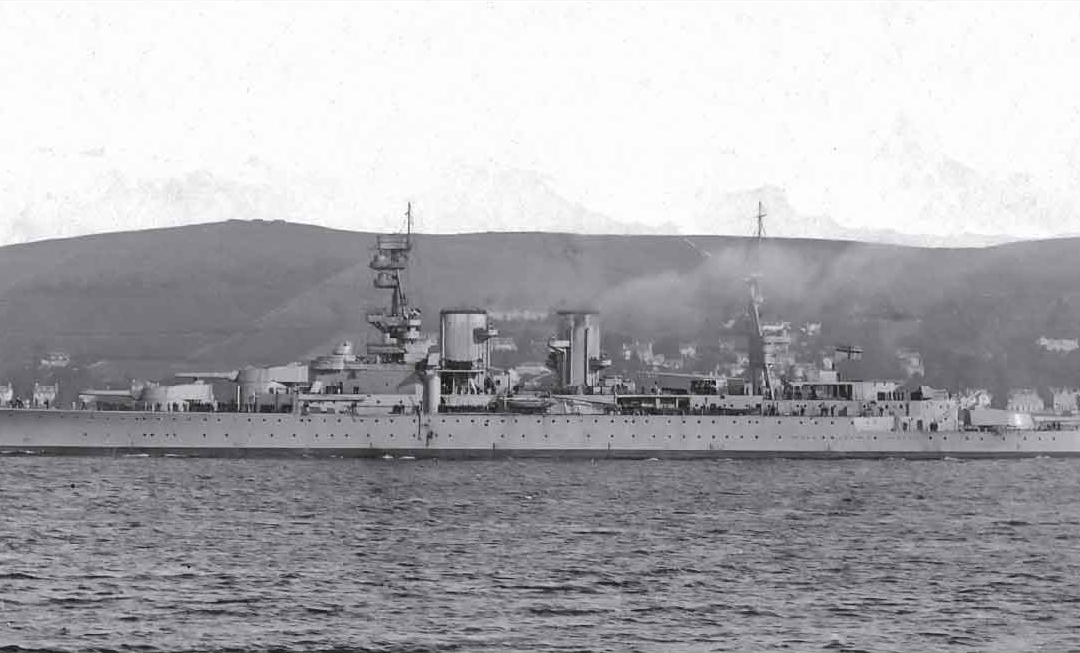
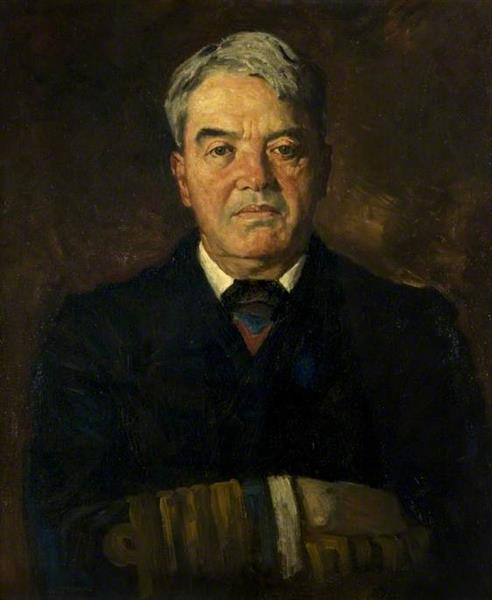
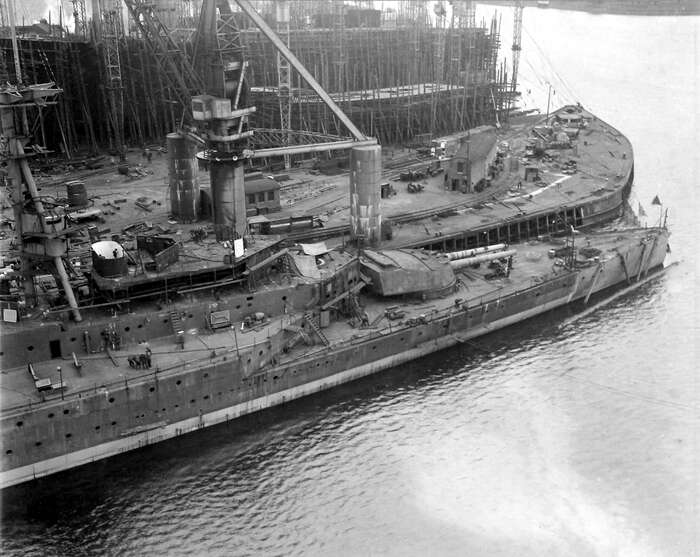
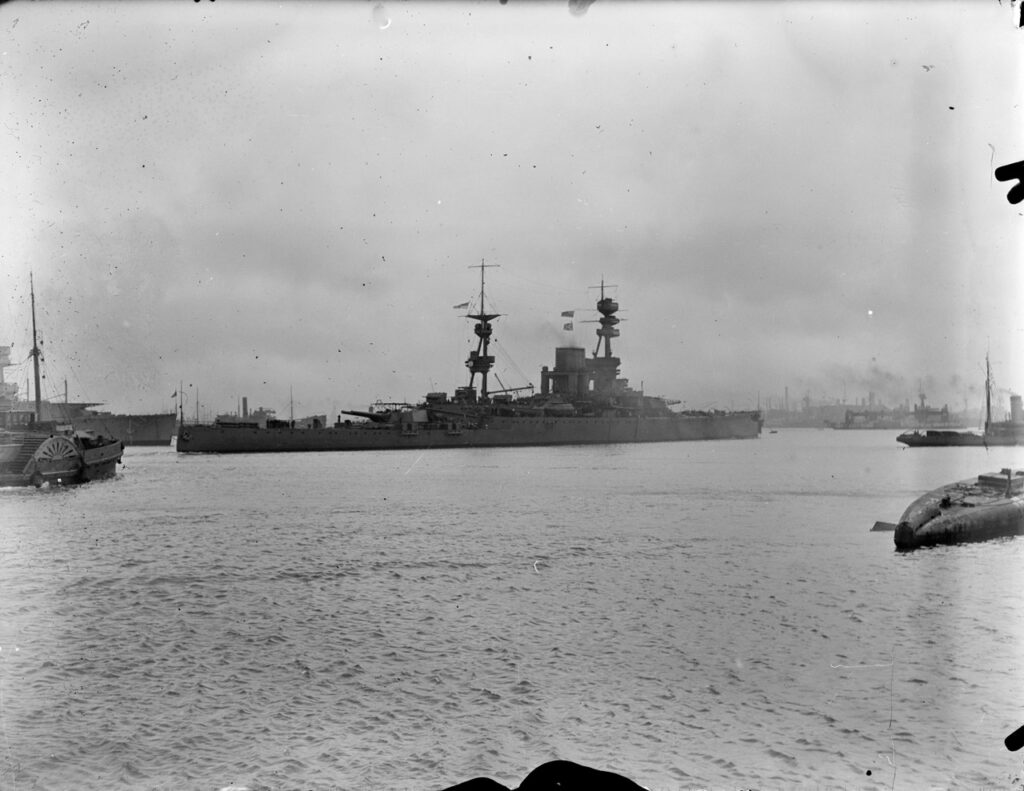
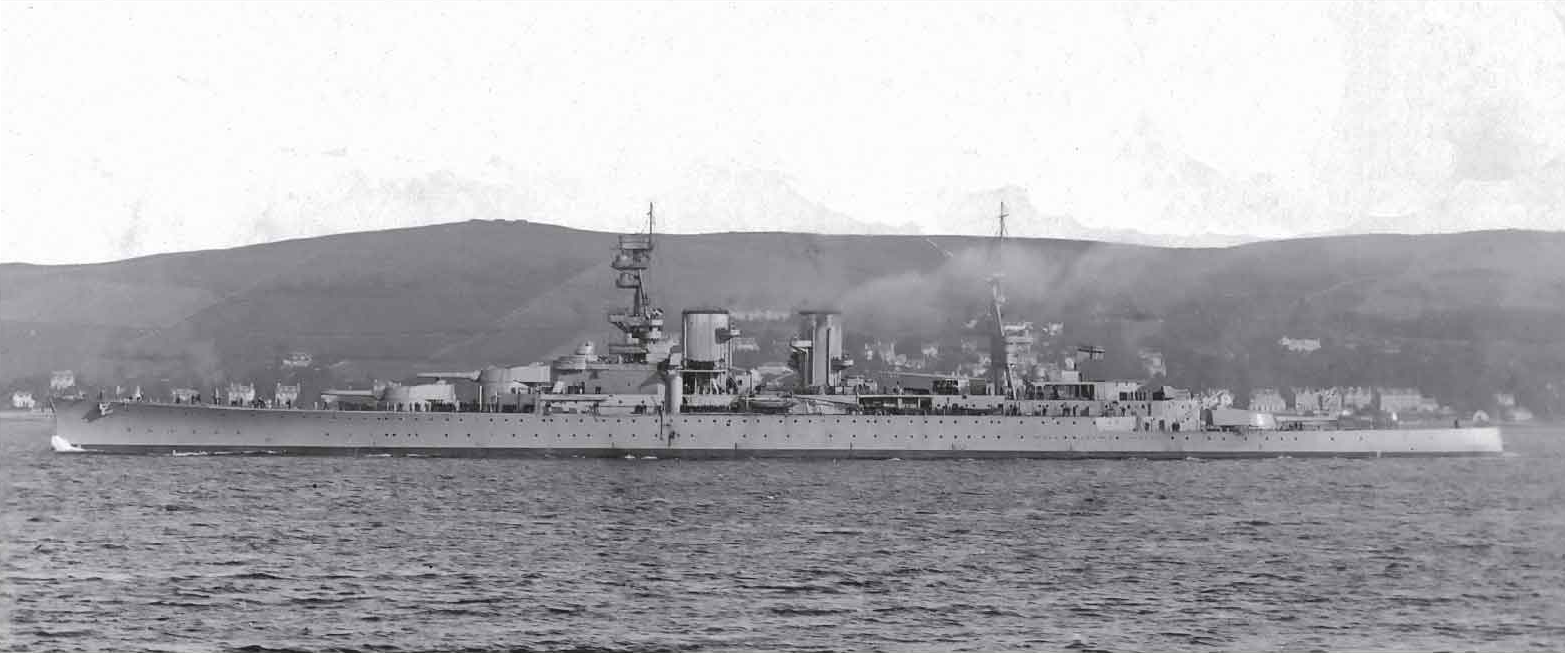

Recent Comments